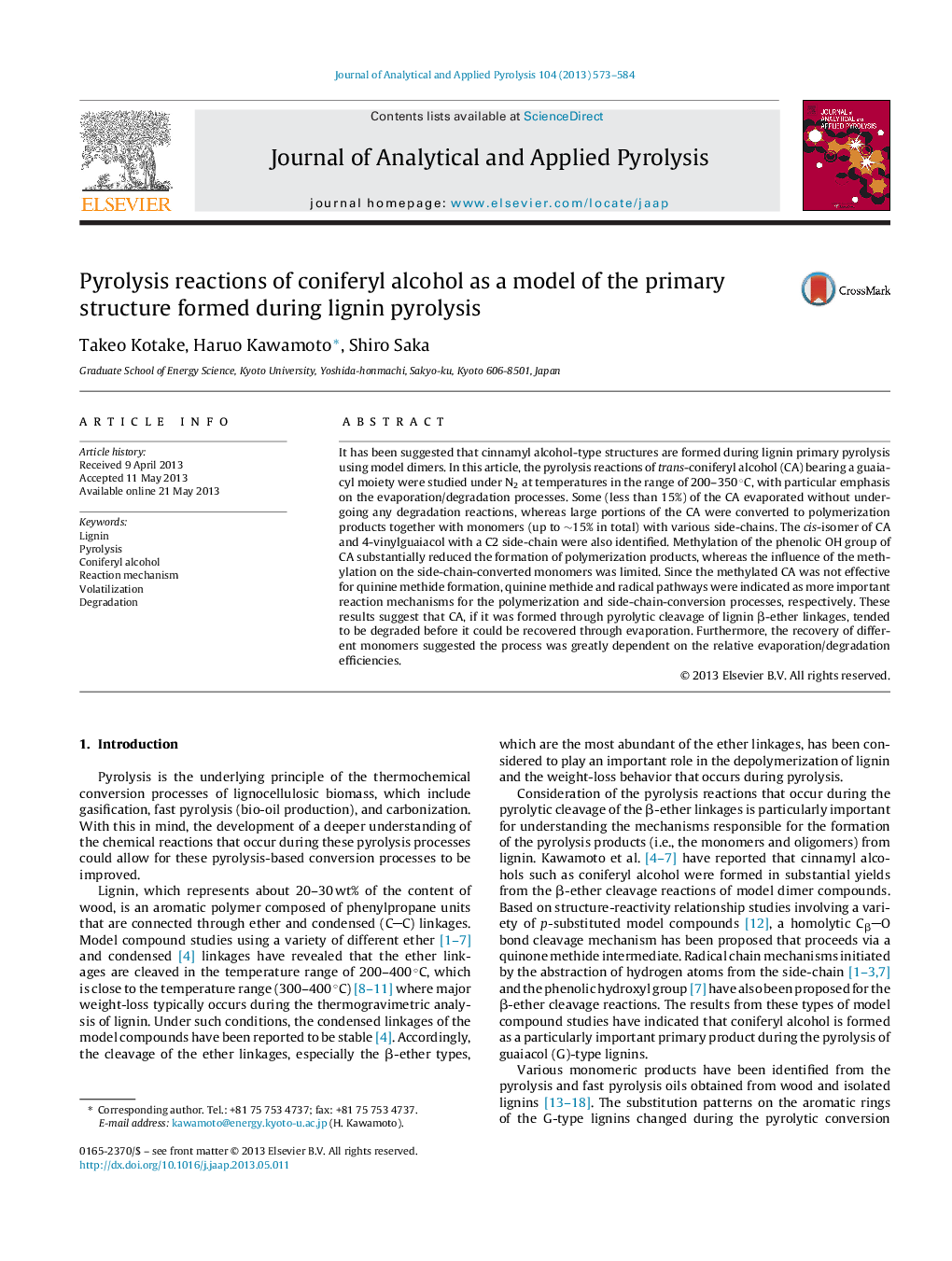| Article ID | Journal | Published Year | Pages | File Type |
|---|---|---|---|---|
| 1196825 | Journal of Analytical and Applied Pyrolysis | 2013 | 12 Pages |
•The evaporation/degradation behavior of coniferyl alcohol was revealed.•The polymerization reaction was the most significant.•Various side-chain conversion products were formed.•A quinone methide mechanism is more important for the polymerization.•Radical mechanisms are more important for the side-chain conversion.
It has been suggested that cinnamyl alcohol-type structures are formed during lignin primary pyrolysis using model dimers. In this article, the pyrolysis reactions of trans-coniferyl alcohol (CA) bearing a guaiacyl moiety were studied under N2 at temperatures in the range of 200–350 ̊C, with particular emphasis on the evaporation/degradation processes. Some (less than 15%) of the CA evaporated without undergoing any degradation reactions, whereas large portions of the CA were converted to polymerization products together with monomers (up to ∼15% in total) with various side-chains. The cis-isomer of CA and 4-vinylguaiacol with a C2 side-chain were also identified. Methylation of the phenolic OH group of CA substantially reduced the formation of polymerization products, whereas the influence of the methylation on the side-chain-converted monomers was limited. Since the methylated CA was not effective for quinine methide formation, quinine methide and radical pathways were indicated as more important reaction mechanisms for the polymerization and side-chain-conversion processes, respectively. These results suggest that CA, if it was formed through pyrolytic cleavage of lignin β-ether linkages, tended to be degraded before it could be recovered through evaporation. Furthermore, the recovery of different monomers suggested the process was greatly dependent on the relative evaporation/degradation efficiencies.
